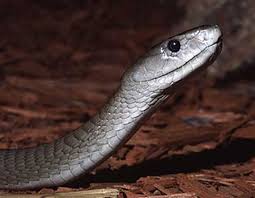For today I would like to research the different kinds of snakes that live in Kenya.
The Green Mamba: This snake is, you guessed it, green and lives mostly up in trees where it's safer and very well camouflaged. The green mamba is a typically shy and non-aggressive snake and would prefer to slither away un-noticed instead of facing whatever is bothering it. Besides its shy nature, this snake is extremely dangerous and has neurotoxins in its venom that goes for the nervous system and the brain. You can and will die if this is not treated, so avoid climbing trees if your in Kenya.
The Boomslang: Boom is the Afrikaans word of tree, so like the Green Mamba, this snake like to dwell up in the tree tops. Males are a pretty green while the females are a very dull brown. Because of their color, these snakes can use camouflage very well with trees. Also like the Green Mamba, the Boomslang is a very shy snake. The only reason this snake would attack is if it feels threatened or provoked. Once bitten, a haemotoxin in the venom stops the blood clotting process and you virtually die from internal bleeding after two to five days. The reason this is so deadly is that signs of the bleeding normally don't show until about 24 hours after the bite, by then you're probably a goner.
The Cobra: There are four different species of cobra in Kenya, making interaction with them frequent. The different species of cobra are the Black-necked spitting cobra, the Red spitting cobra, the Forest Cobra, and the Egyptian Cobra. One of the largest spitting cobras found in Kenya was about 9 feet long. Their venom contains neurotoxins and can be fatal. Adding to this venom, they can also spit it, causing blindness.
The Black Mamba: This is the longest and most poisonous snake in all of Africa and the fastest and most venomous land snake in the would and most likely the most bad-tempered snake ever. Surprisingly, this snake is shy, but when confronted is will show major aggression, usually by striking repeatedly even when they victim is down. Their venom has neurotoxins and will show symptoms within minutes and will die soon after if there is no anti-venom administered.
The Puff Adder: This snake is the cause of the most snake bite deaths in Kenya. They enjoy basking in the sun, especially in walking paths. They don't like to move a lot, so are not scared away by movement and actually don't mind attacking travelers with lightening speed. This snakes venom contains cytotoxin that destroys tissues. This bite will become fatal and the tissue around the wound will continue to die and can lead to amputation.
The African Rock Python: This is the third largest snake in the world. It's non-venomous and doesn't go after humans, but will. They kill prey through suffocation and swallow it whole, they are bad-tempered and will bite with aggression if provoked. They normally eat small mammals and reptiles, but have killed and eaten children and tried adults too.
Thursday, November 20, 2014
Thursday, November 13, 2014
Spiders of Kenya
Here's another update for my genius project of Kenya, Africa. Today I want to look at spiders, poisonous, non poisonous, small spiders, and tarantulas.
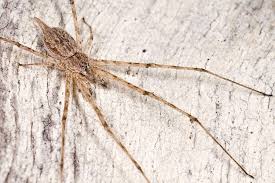 Two-tailed Spider: These are also known at tree-trunk spiders, they get this name from two long spinnerets at the back of the abdomen. They normally spin their webs on tree bark or other camouflaged surface where they can blend in to catch their prey unexpected. They eat mostly insects and upon capture the spider wraps its victim and give a fatal venom bite.
Two-tailed Spider: These are also known at tree-trunk spiders, they get this name from two long spinnerets at the back of the abdomen. They normally spin their webs on tree bark or other camouflaged surface where they can blend in to catch their prey unexpected. They eat mostly insects and upon capture the spider wraps its victim and give a fatal venom bite. 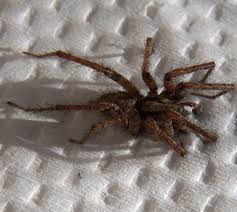 Funnel Web Spider: These spiders get their name from the funnel like webs they create to hide and catch prey. Once a insect gets trapped the spider jumps out to get it with amazing speed. The females usually stay within the comfort of their funnel homes, but males usually have to abandon theirs to find mates. If the female doesn't want a male, they might give a fatal bite.
Funnel Web Spider: These spiders get their name from the funnel like webs they create to hide and catch prey. Once a insect gets trapped the spider jumps out to get it with amazing speed. The females usually stay within the comfort of their funnel homes, but males usually have to abandon theirs to find mates. If the female doesn't want a male, they might give a fatal bite. 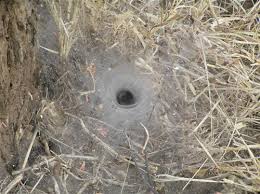
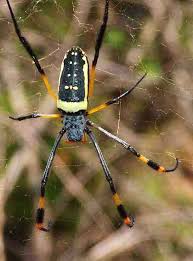

Golden Orb Weaver: This is one of the largest spiders in Kenya and it also produces the strongest silk for web. Because of this web, these spiders can create webs that can span across roadsides and other large areas.
Thursday, November 6, 2014
Kenya landscapes
Today, for my genius project, I'll be looking up the landscapes of Kenya, Africa.
Kenya has some of the most diverse landscapes of Africa, which includes, highlands, savannah grasslands, indigenous forests, and coral gardens.
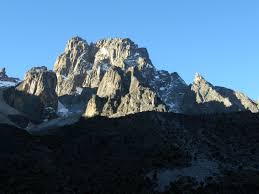
Highlands: The highlands in Kenya include their second highest peak, Mount Kenya. Many hikers enjoy going to these highlands, which are called Central Highlands. There are many different ranges that people can go on, most of them set lower on the mountains, but are still dangerous. It's always interesting to go on one of these hikes, you might get a chance to see some wildlife and the scenery is just incredible.
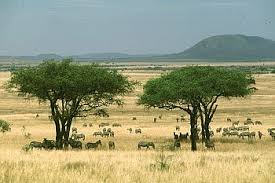 Savannah Grasslands: These landscapes go over very wide ranges and typically have very few scattered trees and brush. They have different seasons to go along with it, cool - dry, warm - wet, and hot - dry. There is a lot of vegetation and many grazing animals come and go through here, because of the wide ranges of the savannah, animals can eat constantly and when they leave to find more, even more vegetation can grow from where they just left. Many people live around these grasslands including the well known Massai tribe of Kenya. This is also a great touring area for people on safaris.
Savannah Grasslands: These landscapes go over very wide ranges and typically have very few scattered trees and brush. They have different seasons to go along with it, cool - dry, warm - wet, and hot - dry. There is a lot of vegetation and many grazing animals come and go through here, because of the wide ranges of the savannah, animals can eat constantly and when they leave to find more, even more vegetation can grow from where they just left. Many people live around these grasslands including the well known Massai tribe of Kenya. This is also a great touring area for people on safaris.
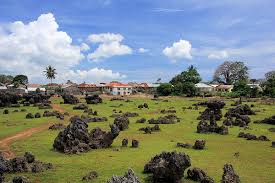
Coral Gardens: Wasini is one of the main attractions in Kenya. There is a board walk way where you go into a swamp of dead fossil coral sticking out from the water. There are also diving and snorkeling sights where you can swim with dolphins, manta rays, whale sharks, and the diverse marine life among the coral.

Kenya has some of the most diverse landscapes of Africa, which includes, highlands, savannah grasslands, indigenous forests, and coral gardens.

Highlands: The highlands in Kenya include their second highest peak, Mount Kenya. Many hikers enjoy going to these highlands, which are called Central Highlands. There are many different ranges that people can go on, most of them set lower on the mountains, but are still dangerous. It's always interesting to go on one of these hikes, you might get a chance to see some wildlife and the scenery is just incredible.
 Savannah Grasslands: These landscapes go over very wide ranges and typically have very few scattered trees and brush. They have different seasons to go along with it, cool - dry, warm - wet, and hot - dry. There is a lot of vegetation and many grazing animals come and go through here, because of the wide ranges of the savannah, animals can eat constantly and when they leave to find more, even more vegetation can grow from where they just left. Many people live around these grasslands including the well known Massai tribe of Kenya. This is also a great touring area for people on safaris.
Savannah Grasslands: These landscapes go over very wide ranges and typically have very few scattered trees and brush. They have different seasons to go along with it, cool - dry, warm - wet, and hot - dry. There is a lot of vegetation and many grazing animals come and go through here, because of the wide ranges of the savannah, animals can eat constantly and when they leave to find more, even more vegetation can grow from where they just left. Many people live around these grasslands including the well known Massai tribe of Kenya. This is also a great touring area for people on safaris. Coral Gardens: Wasini is one of the main attractions in Kenya. There is a board walk way where you go into a swamp of dead fossil coral sticking out from the water. There are also diving and snorkeling sights where you can swim with dolphins, manta rays, whale sharks, and the diverse marine life among the coral.
Subscribe to:
Posts (Atom)

